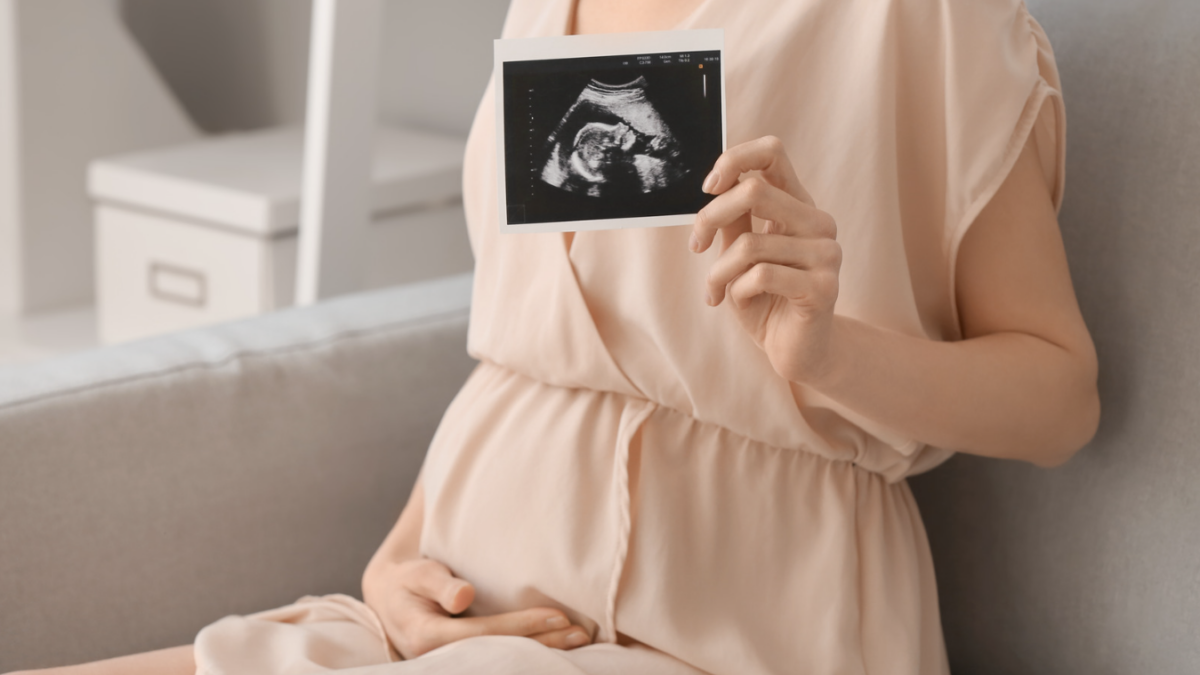
Life inside and outside of the womb is a scientific miracle. While it may be tough to picture what exactly goes on inside of a woman’s pregnant belly, modern medicine and science have shown that unborn babies aren’t just a pile of goo; they are living, breathing, moving humans who are constantly prepping for life outside of the womb.
Here are some indisputable facts about unborn babies that the Supreme Court justices would do well to keep in mind when they hear arguments on Dobbs v. Jackson Women’s Health Organization on Wednesday.
1. Life Begins At Conception
For years, medical textbooks have recognized that biological life begins the moment an egg, carrying half of the genetic information required to create life, is fertilized by sperm, which carries the other half of the genetic information.
“[The Zygote] results from the union of an oocyte and a sperm. A zygote is the beginning of a new human being. Human development begins at fertilization, the process during which a male gamete or sperm … unites with a female gamete or oocyte … to form a single cell called a zygote. This highly specialized, totipotent cell marks the beginning of each of us as a unique individual,” Dr. Keith L. Moore wrote in “The Developing Human: Clinically Oriented Embryology.”
Despite the scientific consensus that life is created at the beginning, it’s still a miraculous feat worth remembering considering the fact that the odds of conception during any particular month hover between 15 and 25 percent for most women who are trying to conceive.
2. An Unborn Baby’s Heartbeat Can Be Detected by Six Weeks of Gestation
In the womb, a baby’s heart can be detected by five or six weeks gestation, when it is beating at approximately 98 beats per minute. This fact quickly became a point of contention earlier this year when Texas Gov. Greg Abbott signed a “heartbeat law” that effectively banned abortion in the state once an unborn baby’s heartbeat is detected around six weeks gestation.
By 15 weeks, the unborn baby is pumping approximately 26 quarts of blood daily through its body.
3. All Major Organs Are Formed and Functional by 15 Weeks of Gestation
Speaking of heartbeats, as Dr. Katrina Furth noted in the Charlotte Lozier Institute’s “On Science” series, by 15 weeks gestation, all major organs in the unborn baby’s body are formed and “most are functional.”
“In fact, almost every organ and tissue forms within the first eight weeks after conception. The rest of the pregnancy is spent growing these organs larger and more mature to prepare for life outside the womb,” Dr. Furth wrote.
At 15 weeks, the baby’s skeleton is also present and has largely transformed from cartilage to bone.
4. Babies in the Womb Can Control Their Fingers
By 10 and a half weeks gestation, babies in the womb can control their fingers. Unborn babies typically begin to explore their new appendages by opening or closing their fingers into their hands before slowly learning to intentionally reach and grasp at the womb around them. By 27 weeks, Furth says a baby “will be able to support his own body weight momentarily by grasping!”
As early as 10 weeks gestation, unborn babies also learn to suck their thumbs and start to show a preference for a dominant right or left hand.
“When examining the same children over time, almost every fetus that preferred sucking his or her right thumb remained right-handed, but only a few of the fetuses that sucked their left thumbs in their mother’s womb changed preference and were right-handed by the age of 10,” Furth wrote.
5. Unborn Babies Can Touch and Taste
In addition to reaching, grasping, and sucking on their fingers at 15 weeks, babies in utero will often respond to external touches with reflexive movements. Light touches and tickles to the mouth are met with the baby’s natural instinct to turn “her head towards the object as if to prepare for nursing.”
Babies in the womb also react to taste delivered to them through the amniotic fluid from their mother’s bodies and, by 15 weeks, have tastebuds of their own.
“These flavors help train the fetus to enjoy food from the mother’s food culture; however, the fetus also has some preferences of his or her own! For example, if the amniotic fluid tastes sweet because of an injection of saccharin, the fetus swallows more amniotic fluid. If the amniotic fluid tastes bitter, the fetus swallows less amniotic fluid,” Furth wrote.
6. Babies in Utero Have Functioning, Developing Brains
“Throughout early development, the brain and nerves develop faster than almost any other body system. This is likely so that the brain can direct the other body systems,” Furth notes in her research.
This rapid development not only facilitates the growth of other essential bodily functions but also encourages the creation of neurons that are designed to settle into specific parts of the body.
“Babies are born with more neurons than the average adult – about 100 billion neurons,” Furth writes. “Each of these neurons is born in a special location where all the dividing cells stay, but each neuron must move or migrate to its final destination.”
The baby’s cranial development also supports brain connections stimulating memory, decision making, emotions, and more processes beginning as early as 15 weeks gestation that can “last into adulthood.”
7. Unborn Babies Can Feel Pain
As the baby’s brain develops, so does its capacity to feel pain. At 10 weeks, most babies are beginning to get pain receptors in their skin. By 15 weeks, “the spinal nerves needed to transmit touch and pain information to the thalamus have formed.”
Even though the cortex could still be “under construction” at this time in gestation, recent research suggests other parts of the nervous system such as the brainstem, insula, and thalamus all play a role in reading pain.
“Furthermore, pain processing appears to develop before the mechanisms that moderate pain signals, so the fetus may experience a greater intensity of pain at 15 weeks’ gestation than an older fetus or child,” Furth wrote.
8. Female Babies Have Millions of Eggs by 21 Weeks
By the time unborn female babies reach 21 weeks gestation, most have approximately 7 million eggs. Most are only born with close to 1 million after many cells die.
9. The Baby Practices Breathing
In preparation for the outside world, an unborn baby starts attempting to “breathe” using certain movements by 10 weeks gestation. At approximately 13 weeks, Furth said these motions turn more consistent and eventually follow a circadian rhythm by weeks 18-22.
“By 30 weeks gestation, the fetus breathes 30-40% of the day with respiration rates between 30 and 70 breaths per minute, and as the fetus gets closer to his due date, he breathes more and more often,” Furth noted. “Still, even late in the pregnancy, the fetus can stop breathing for up to 2 hours. This breathing practice only moves a small amount of fluid, and does not pull it deeper into the lungs than the trachea. All of the fetus’s oxygen comes from the placenta until birth.”
10. Babies Practice ‘Seeing’ and Hearing in the Womb Too
While unborn babies’ eyelids are fused shut, most of them are reactive to light and will begin rolling their eyes as early as 12 weeks.
“Sporadic eye movements begin around 14 weeks’ gestation, and rapid eye movements, such as those seen during sleep, are first detected around 18 weeks’ gestation. Therefore, the 15-week-gestation fetus mostly makes slower and infrequent spontaneous eye movements. The eyelids are fused shut at this age,” Furth wrote.
Babies in the womb can also hear and, later in pregnancy, will react to sounds or voices with movement.
As Furth concludes, “it is clear from the science that unborn children at 15 weeks’ gestation are already amazingly complex human beings.”
“They can be treated as independent patients, they show preferences independent from their mothers, and they have goal-directed behaviors,” she added. “These humans deserve protection, too.”









